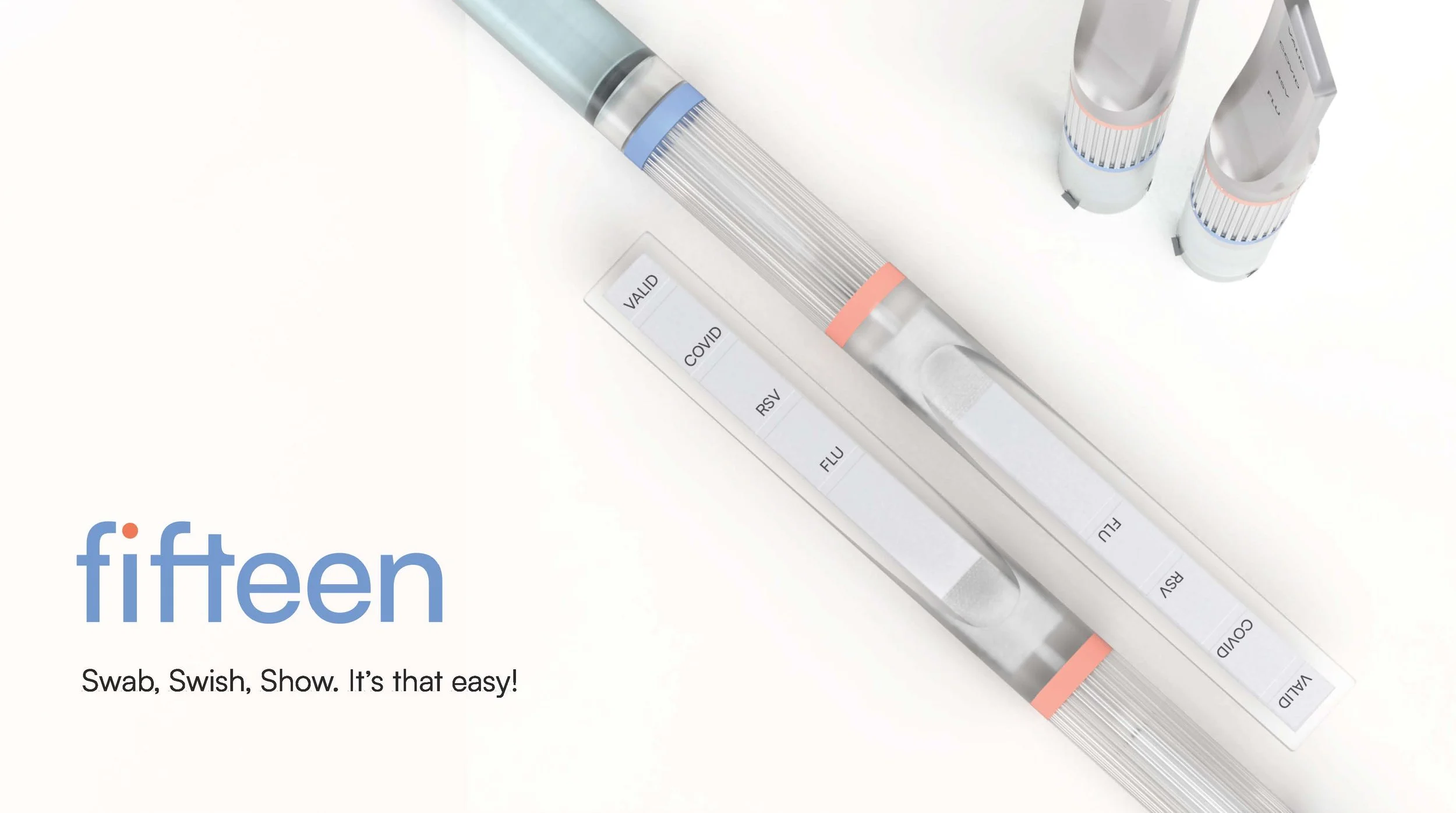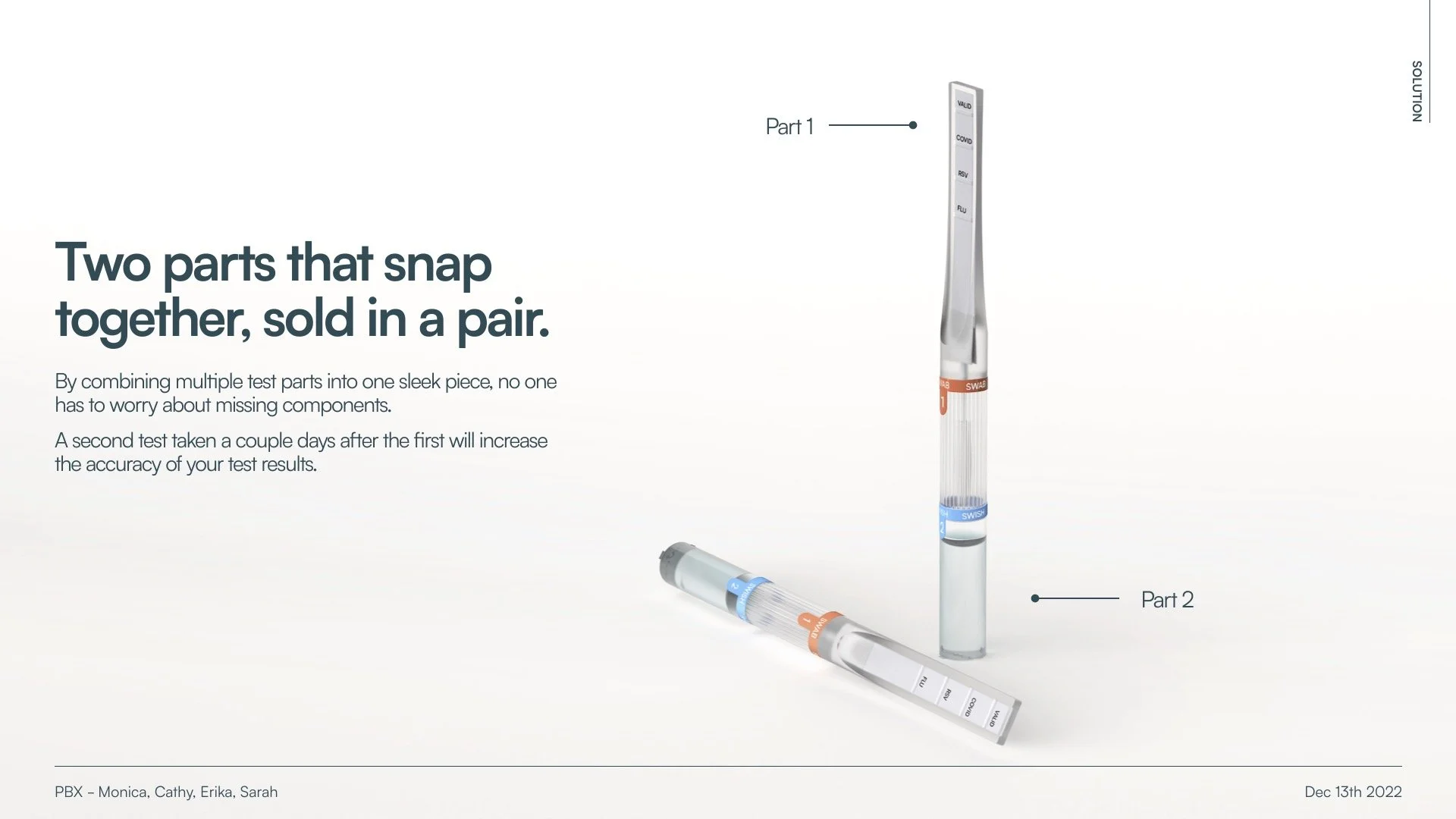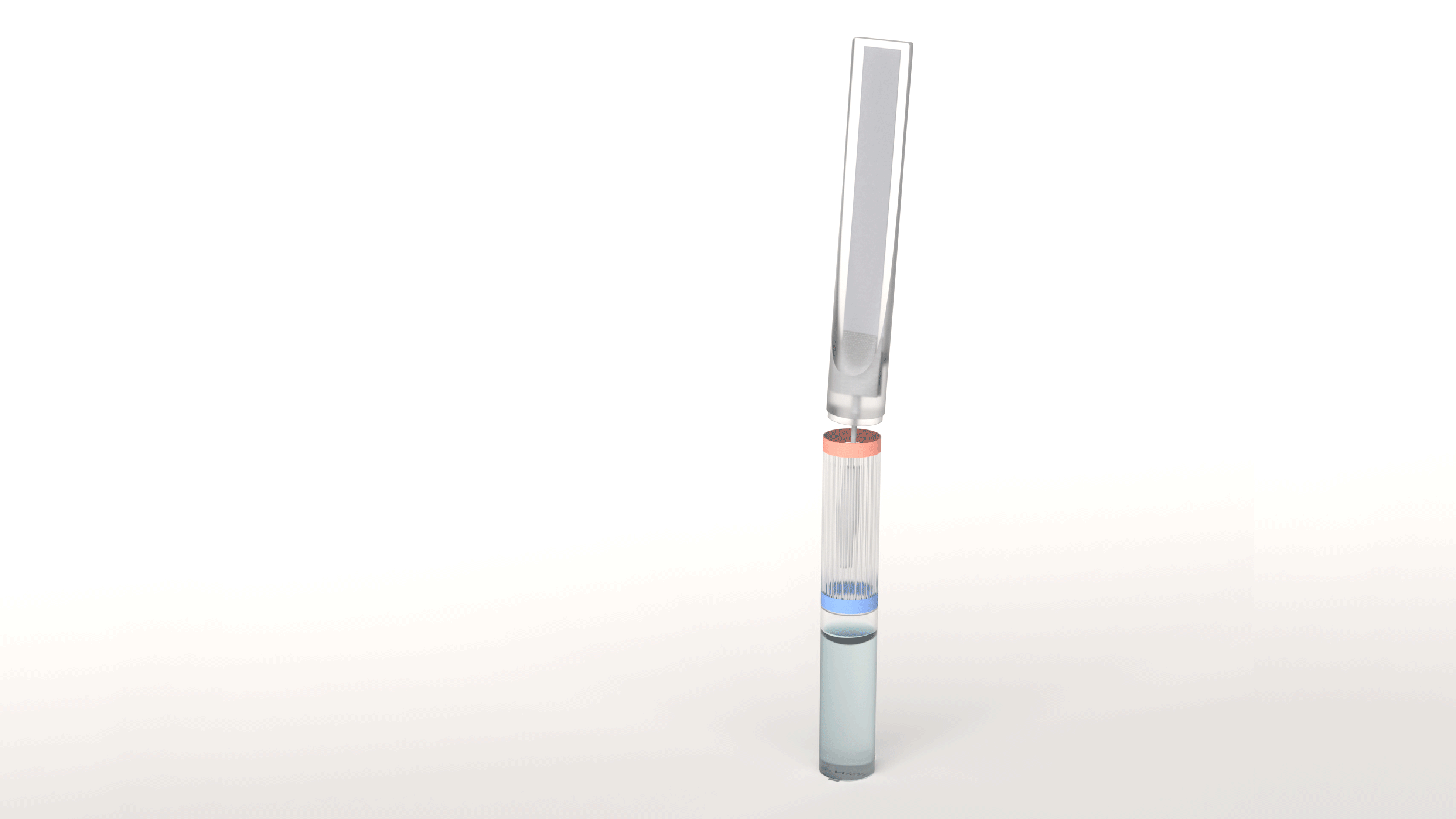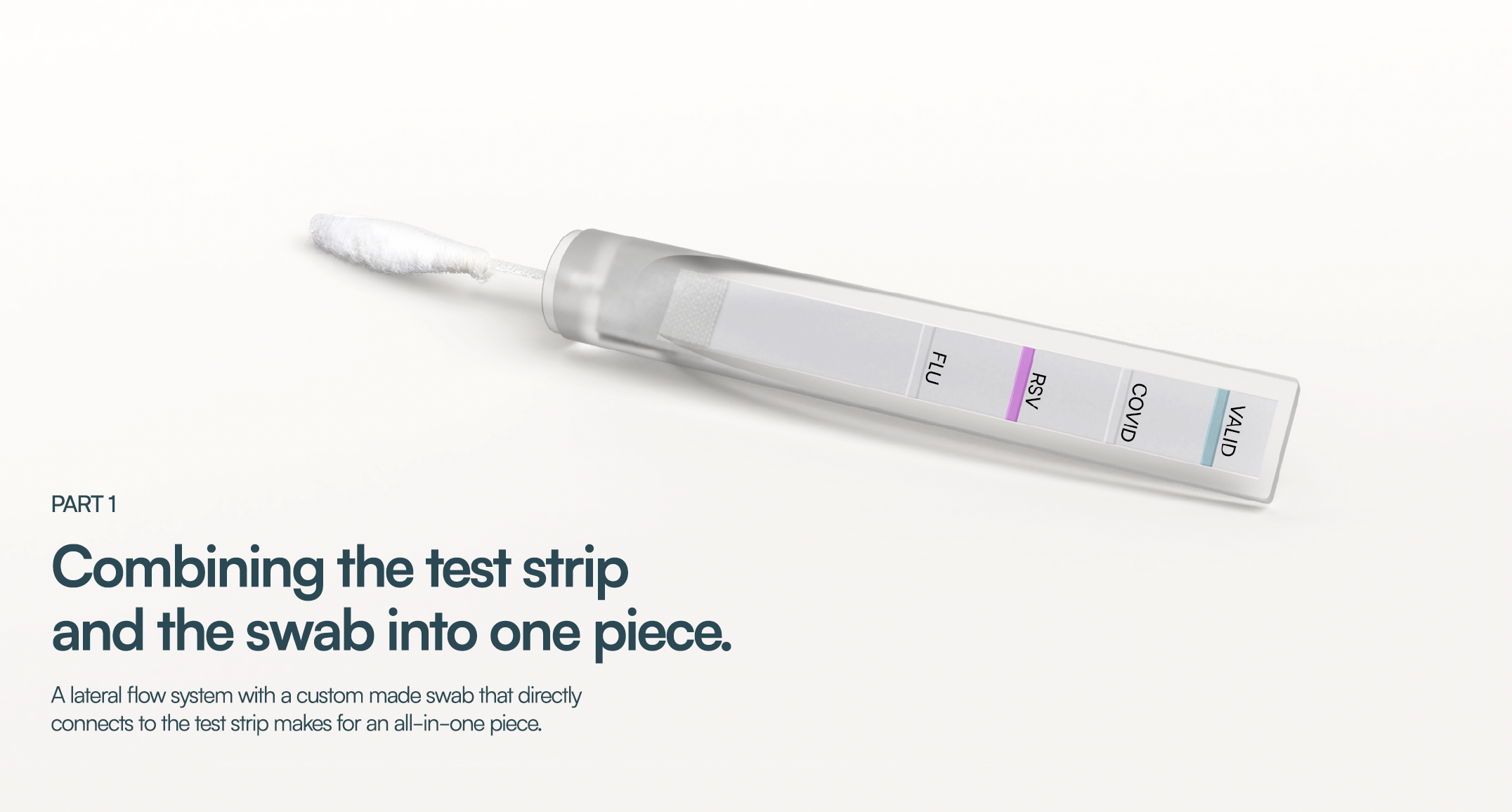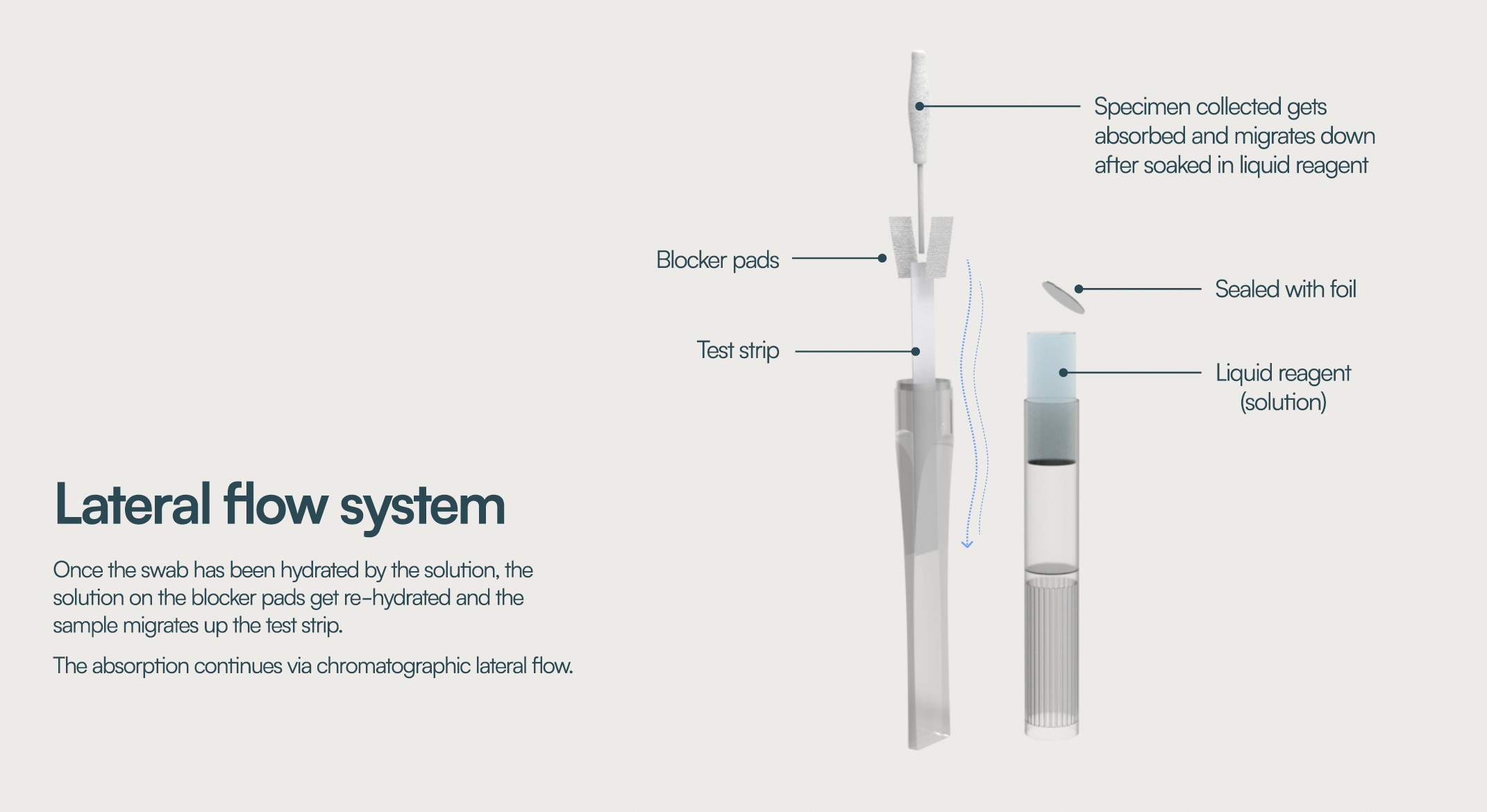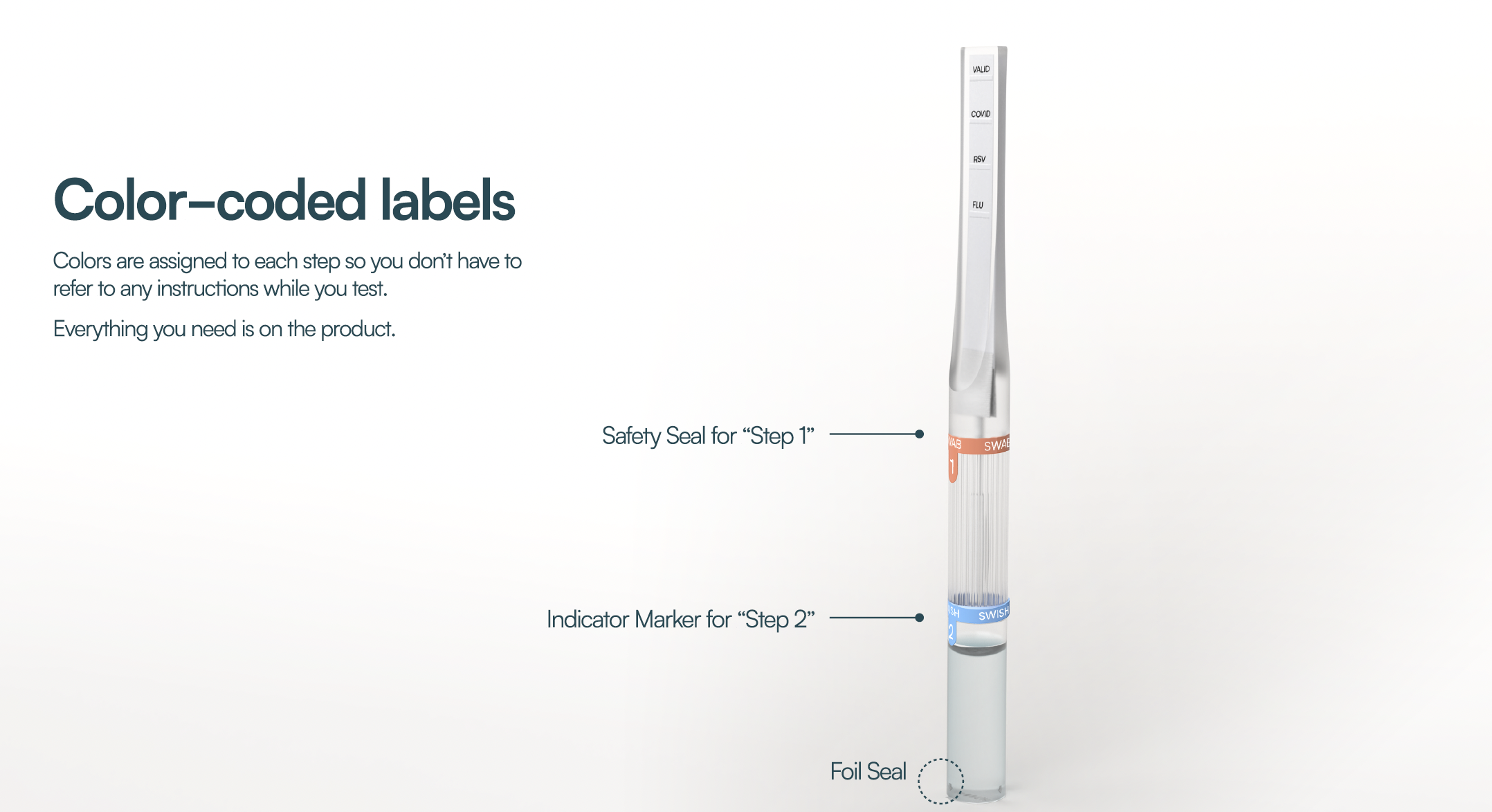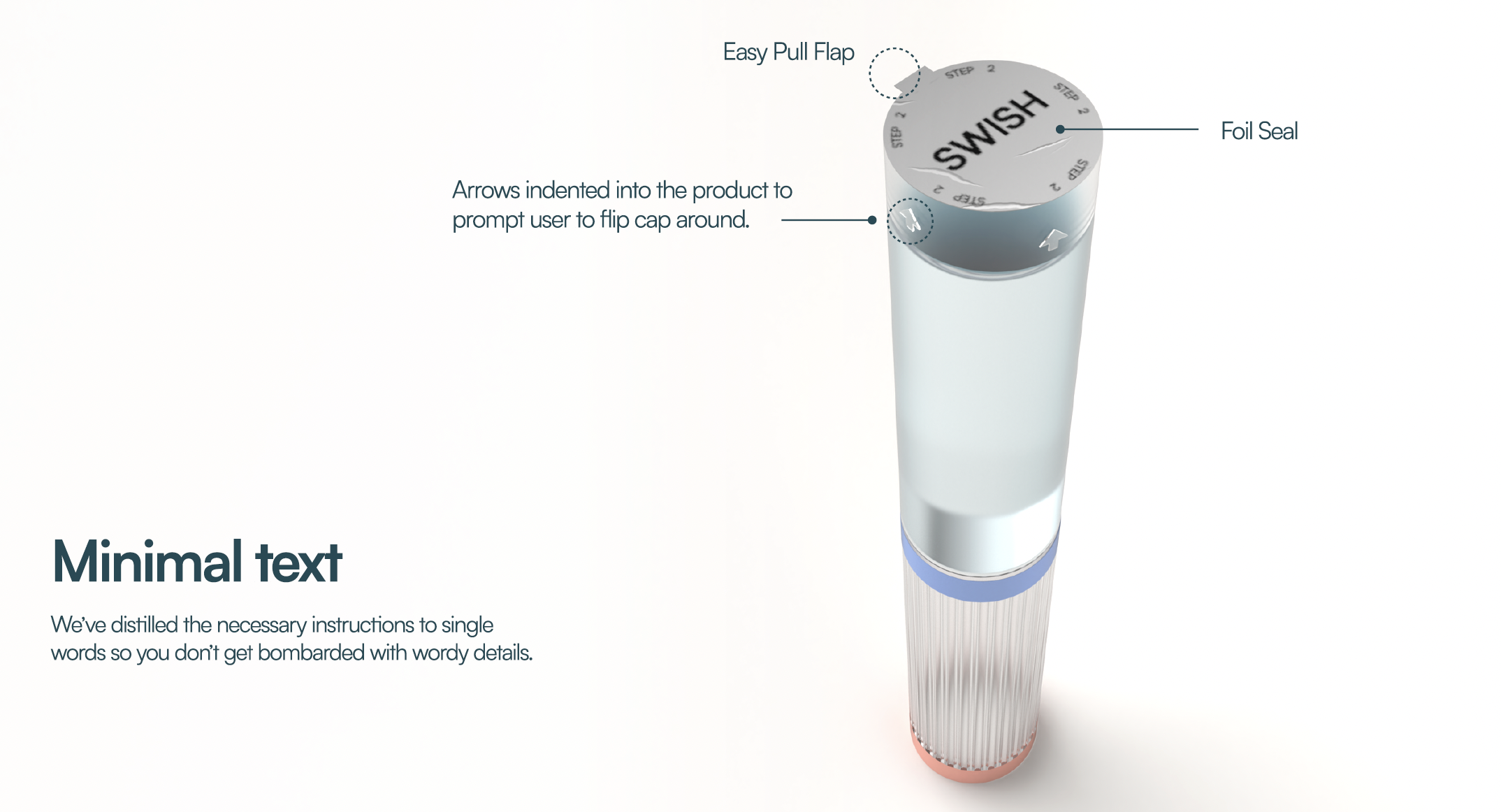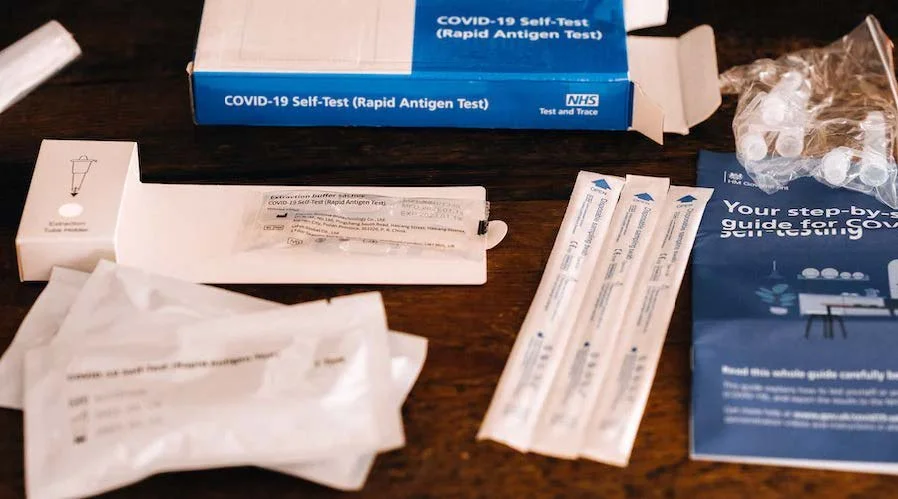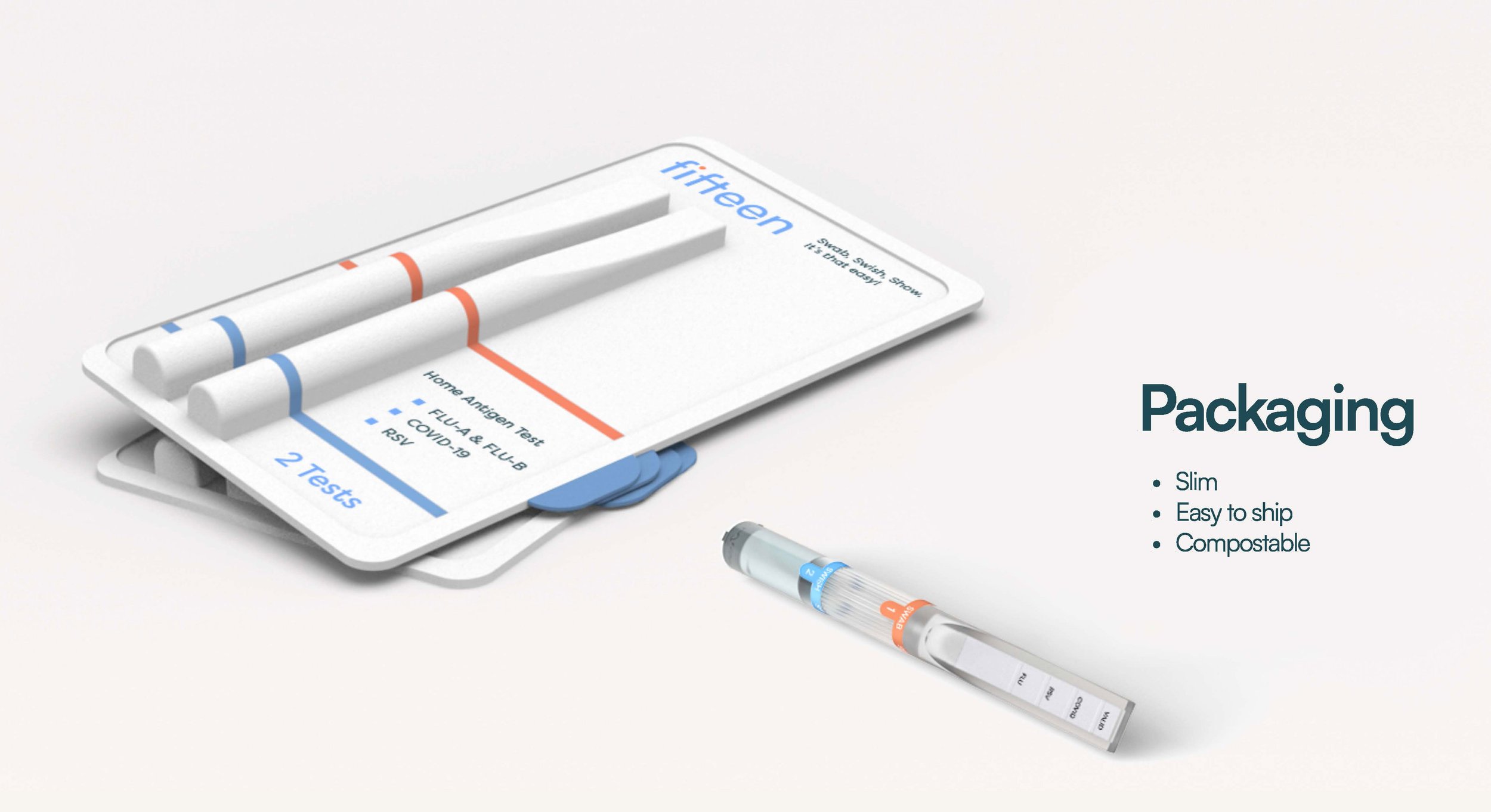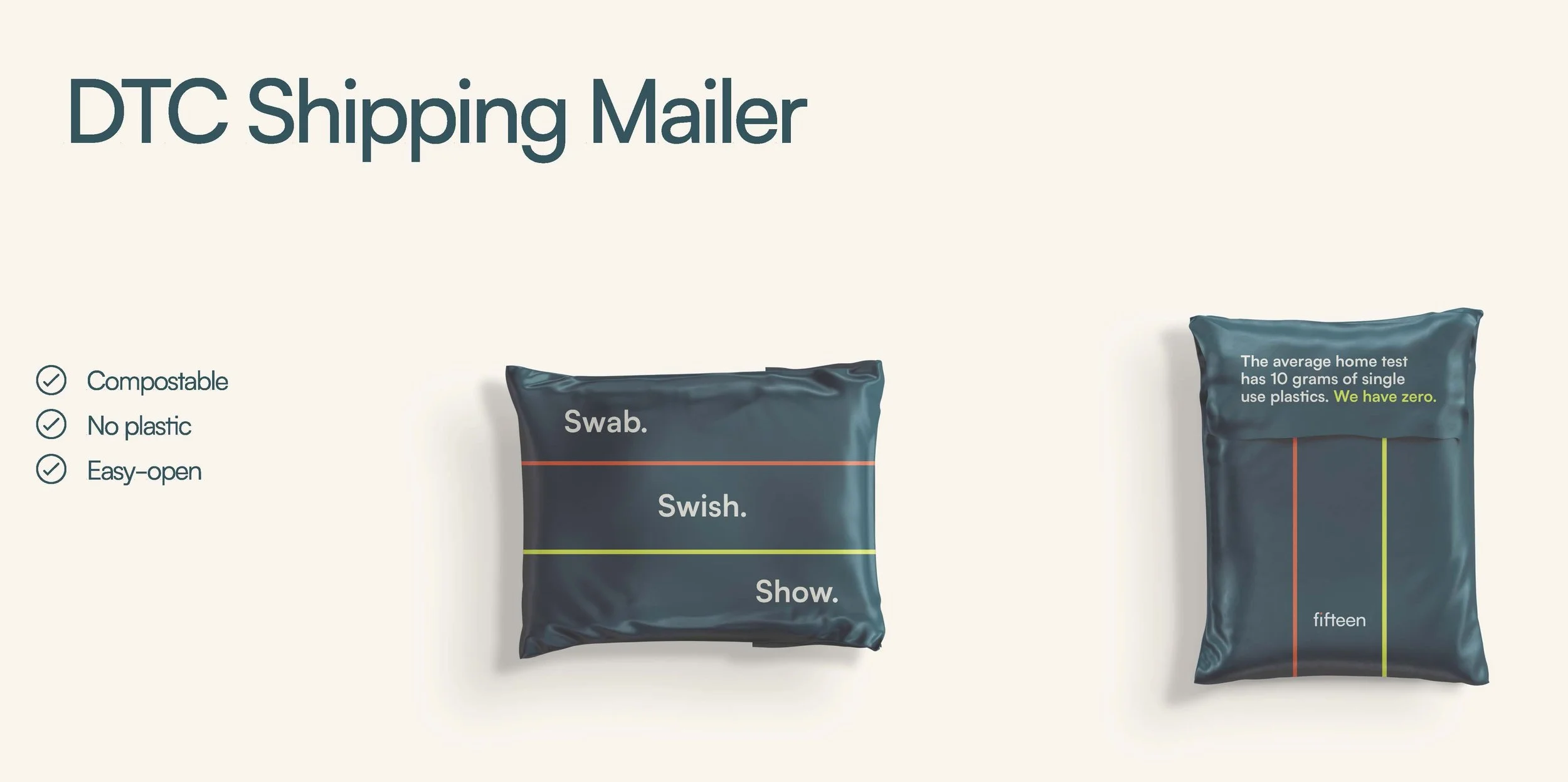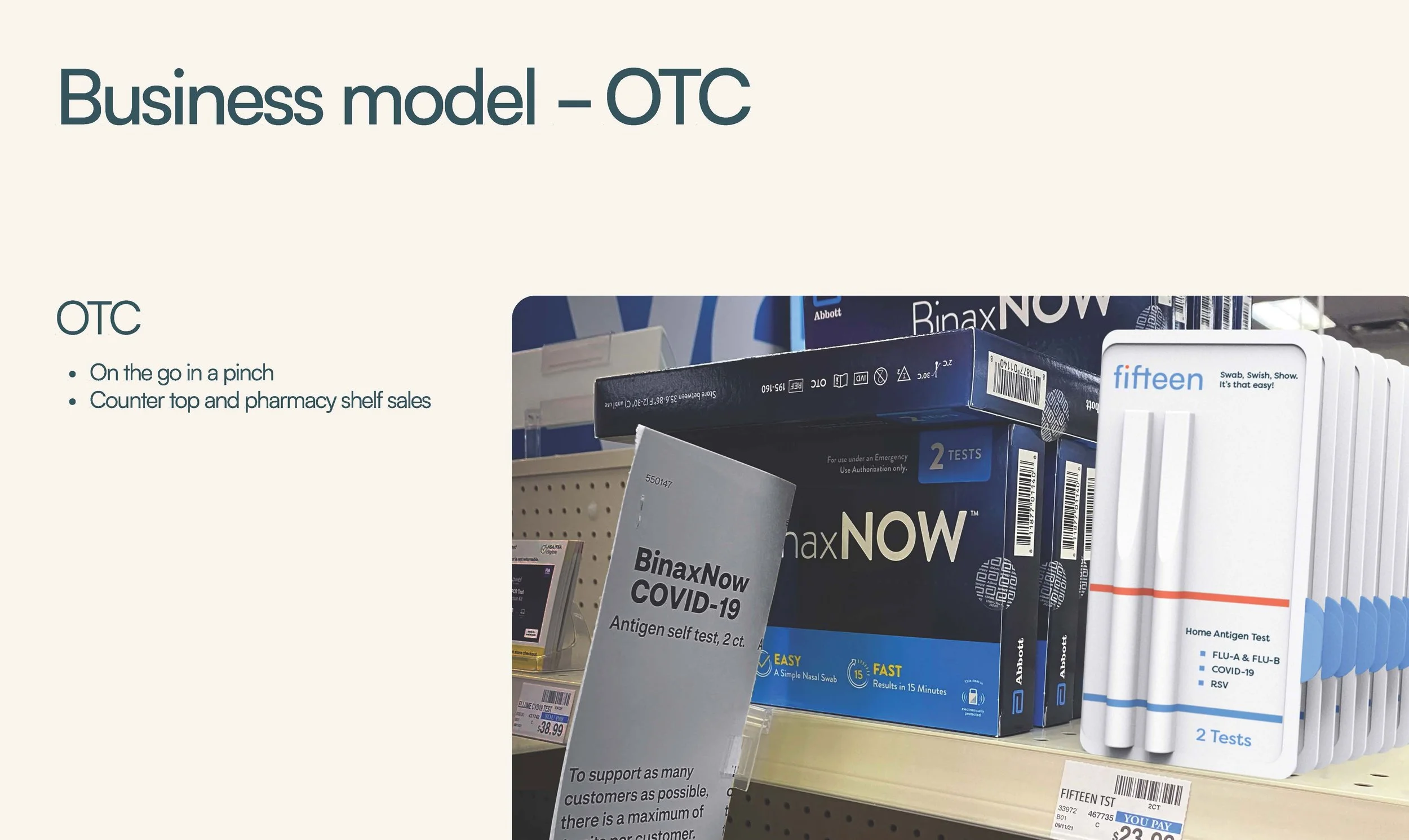
Fifteen: Introducing an All-in-One Virus Rapid Test
How might we reimagine an all-in-one Covid test that decreases waste, increases ease of use, and makes allowance for other diagnostics?
Problem
Think about the last time you took a rapid COVID-19 home test. Every brand has a different protocol, instructions can often be confusing, results can be unclear, and the amount of wasteful packaging is truly excessive.
Solution
The Fifteen Home Kit—getting its name from the familiar waiting period interval—is an all-in-one solution with easy-to-follow steps that fits seamlessly in a purse or back pocket. Fifteen was designed by students Erika Choe, Monica Albornoz, Sarah Hackett, and Cathy Tung as part of the Product, Brand, and Experience course taught by Hlynur Atlasson.
How it works
Fifteen is composed of two parts: A swab-and-test strip combination, and a buffer solution reservoir that both click together into place. “Combining multiple test parts into one sleek piece means not worrying about missing or mysterious components,” offers Cathy Tung.
The product works just like a pen cap, where the buffer solution is situated at the end of the product. When testing, you would pull the product open to swab, flip the cap over, remove the seal and snap the swab into that end to soak in the buffer solution. The fluting texture subtly indicates a functional change as to and where you should grip your fingers to pull the product open.
"We made Fifteen with efficiency and cleanliness in mind,” Erika Choe shares. “Our rapid test uses a snap-to-seal mechanism, so there’s no concern about being exposed to germs from the swab while you’re testing or waiting for the results.”
Three Easy Steps: Swab, Swish, and Show
“Our instructions are clearly distilled into three steps," Monica Albornoz explains, “Swab, Swish, and Show. First, remove the swab to collect your specimen. Second, flip and peel off the bottom foil seal to swish your swab in the buffer solution. And lastly, snap it together and wait for your results to show."
Lateral Flow
Once the sampled swab has been soaked in the buffer solution, the block pads inside the swab-test component gets rehydrated, and the sample collected migrates up to the test strip. The absorption continues via lateral chromatographic flow.
Color-coded Labels
Colors are assigned to each step so you don't have to refer to any instructions while you test. “Everything you need is printed directly on the product. No extra instructions to decipher,” offers Sarah Hackett.
Minimal Text
The team saw plenty of room for improvement. “The existing home kit boxes have an overwhelming amount of text and the instructions aren't always clear,” they explain. “For instance, on a 5.75-inch swab, the necessary swapping depth isn't indicated, making users wonder, ‘did I do it correctly?’ All in all, it's an unfriendly experience. We've distilled the necessary instructions to single words so that the users don't get bombarded with wordy jargon.”
Much Less Solid Waste
Anyone who’s used an over-the-counter rapid test can appreciate how much material—paper, cardstock, vacuum-formed trays, blister packed swabs, and injection-molded hard plastic test strips end up in the garbage. Fifteen is different.
Compared to other tests, Fifteen uses much less packaging, where everything you need is integrated into a single unit.
Packaging and Point of Sale
The team carefully considered the packaging for Fifteen. It is slim, easy to ship, and all the components are fully compostable. The test body is made up of compostable fibrillated cellulose, which is insoluble, chemically inert, and non-reactive (1), while the product packaging uses PaperFoam—a biopolymer derived from industrial starch, potatoes or tapioca, fiber, and other ingredients. Pitched as a direct-to-consumer mode, the test kits are meant to be shipped in a compostable commercial mailer made of PLA (plant materials such as field corn and wheat straw) and PBAT, a bio-based polymer.
With sticker indicators on the test itself, and concise step-by-step instructions on the inside of the packaging itself, efficiency is the central theme throughout the testing experience. If more information is desired, the user may scan the QR code to access further details.
Multi-Tests and the Future
"Across the board, there is unnecessary confusion with long instruction sheets and loose and disorganized text components," adds the team members. "The kits don't always make the user feel confident about the results, often leading to questions like, 'how accurate are these tests?' or 'Did I do it right?'."
“Finally, viral infections like the flu and RSV (Respiratory Syncytial Virus Infection) have been skyrocketing this past winter, and unfortunately, outbreaks will be the new normal. We believe that multi-tests for flu and RSV—along with—COVID-19—are the way of the future.”
1. Vireo Advisors, LLC. “GRAS Notice 954, Fibrillated cellulose.” FDA, 4 June 2020, https://www.fda.gov/media/153020/download

